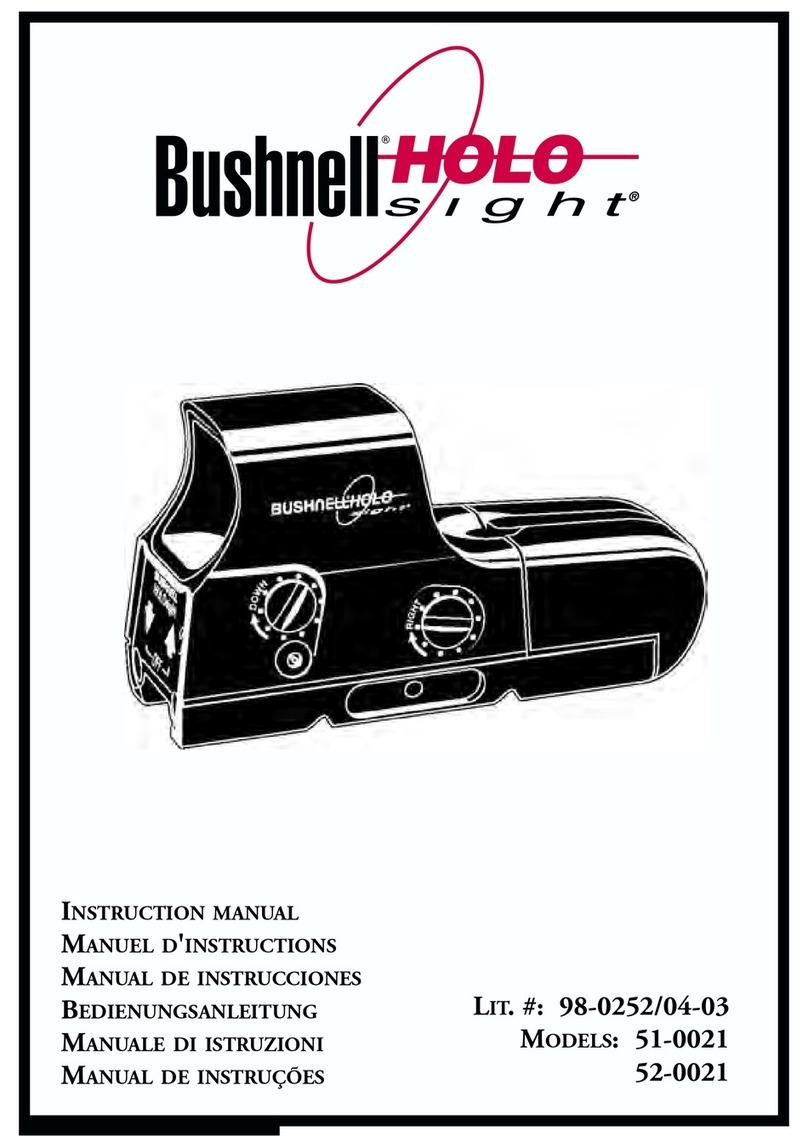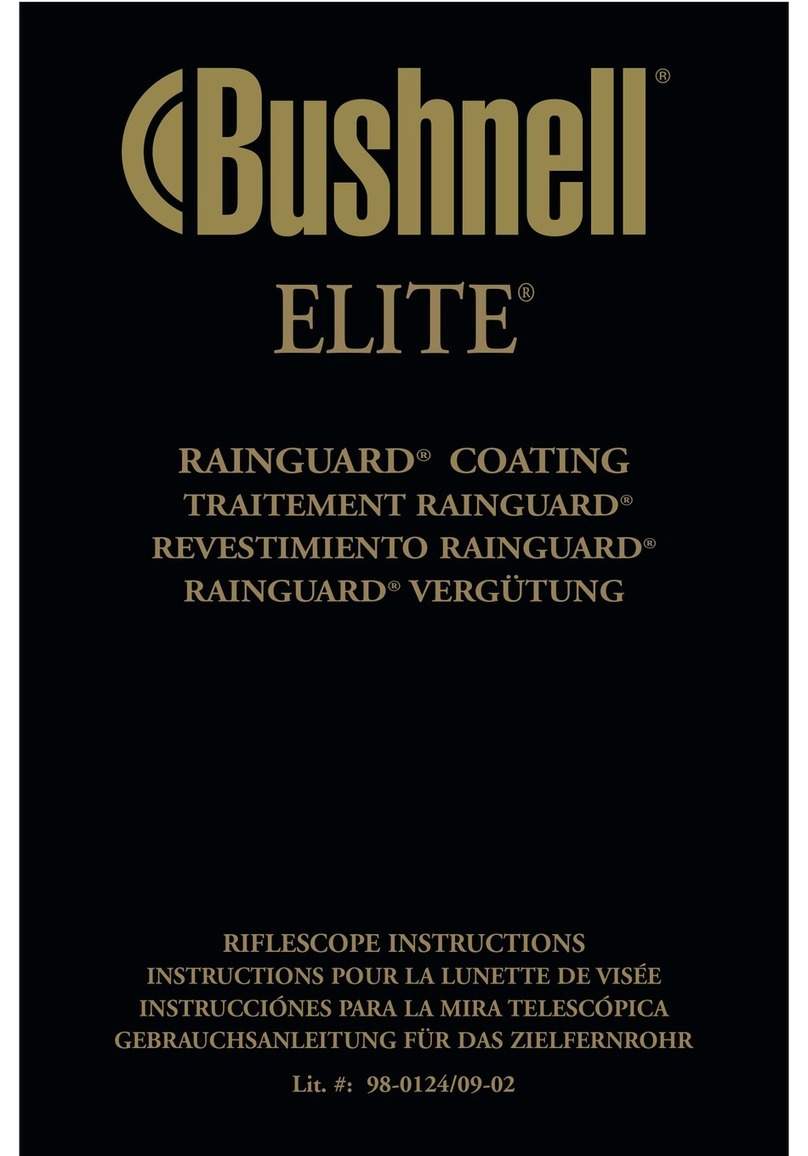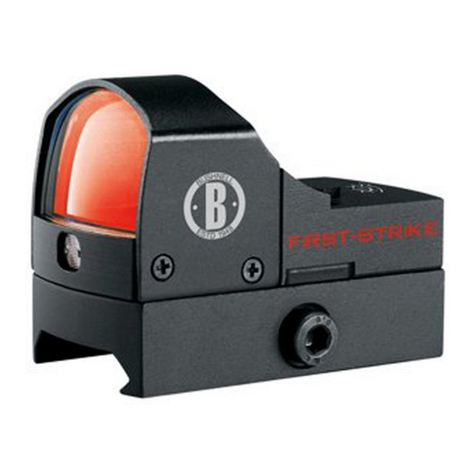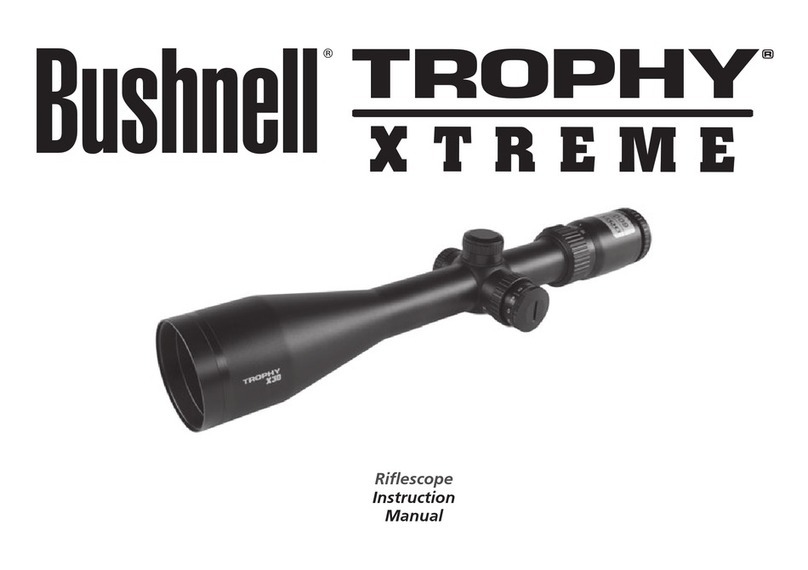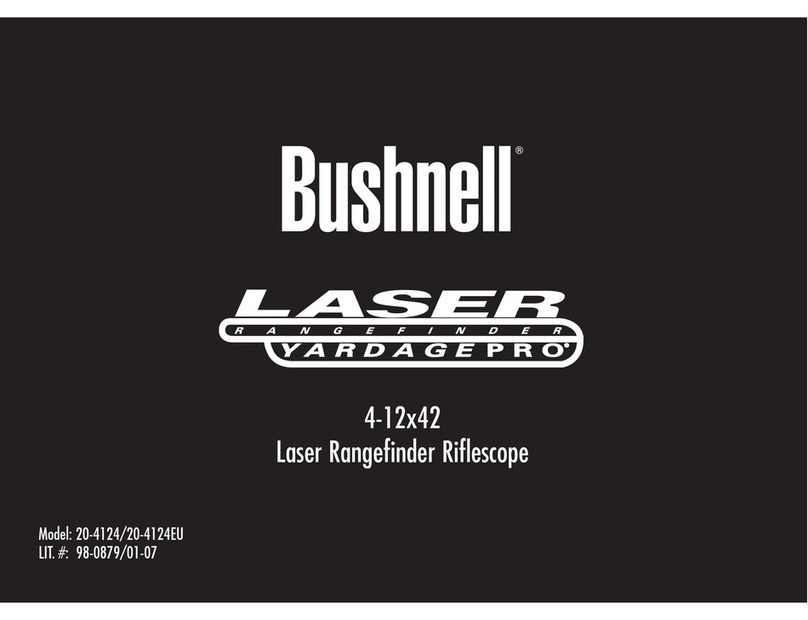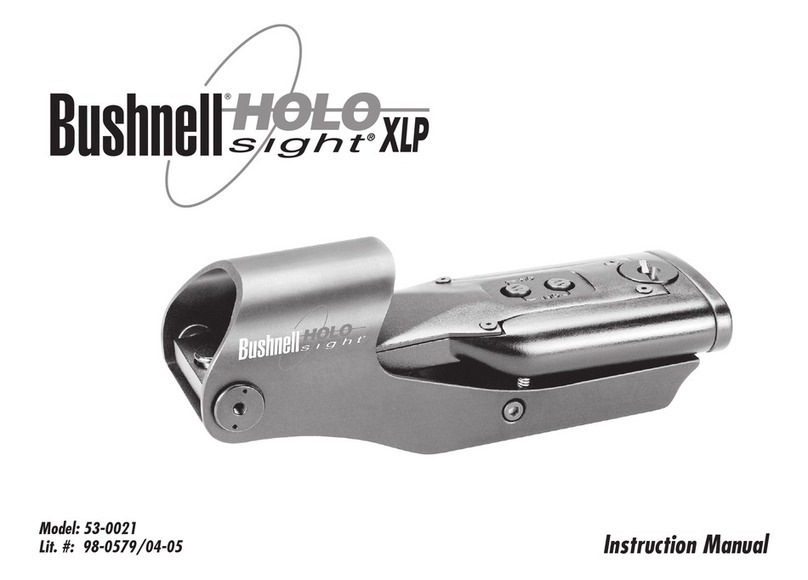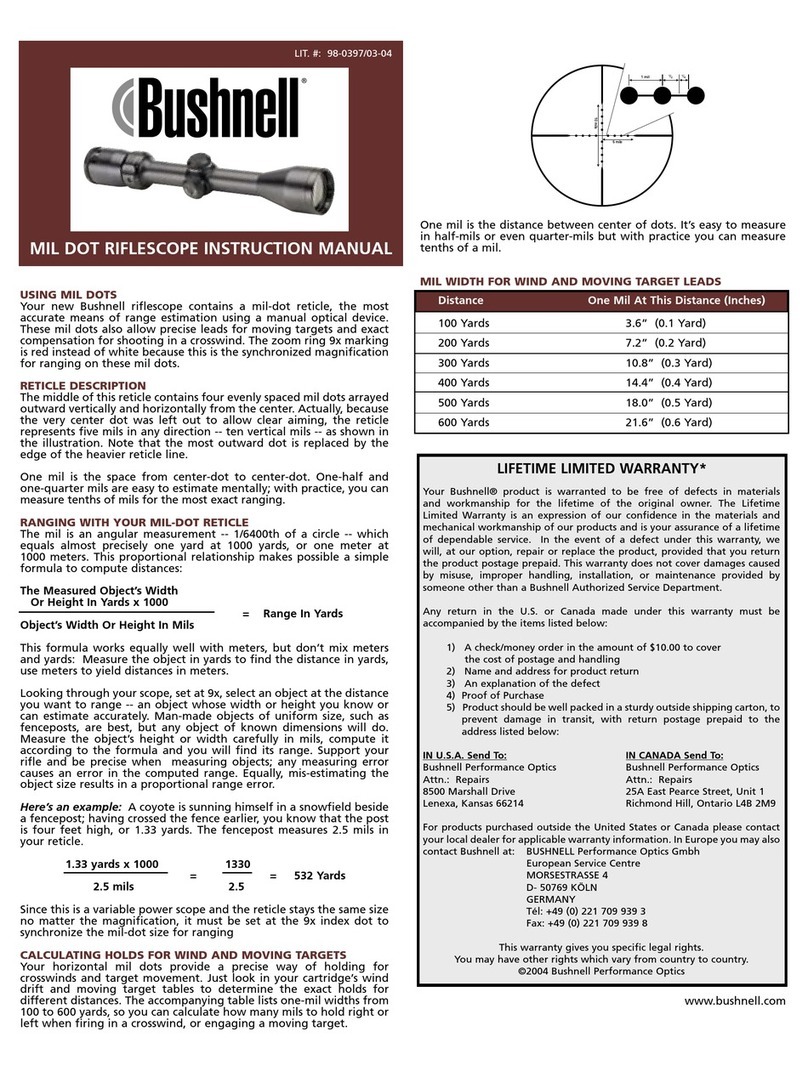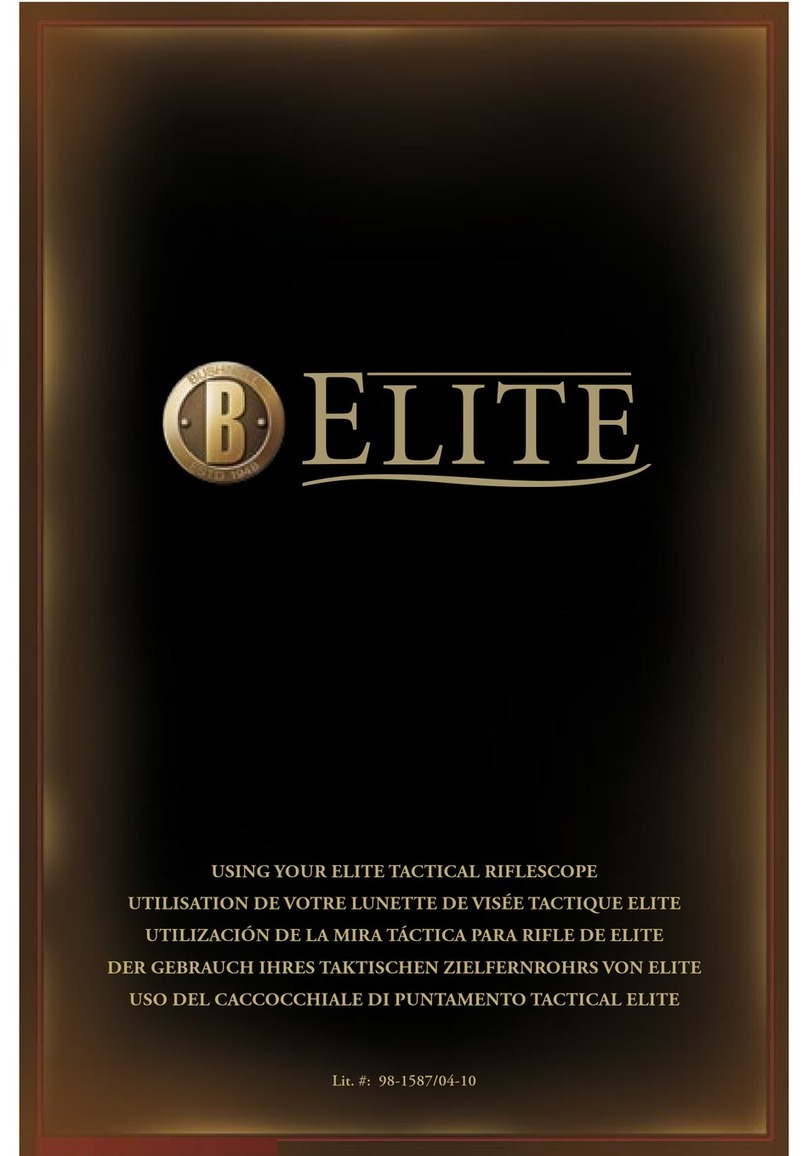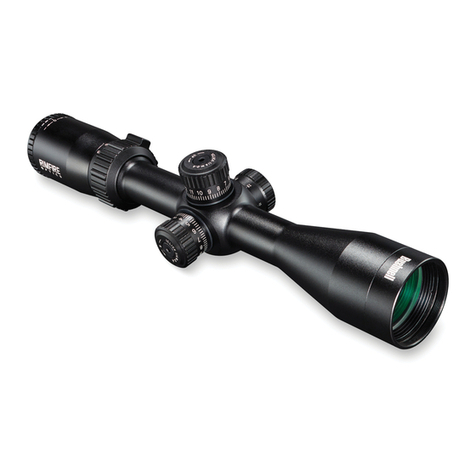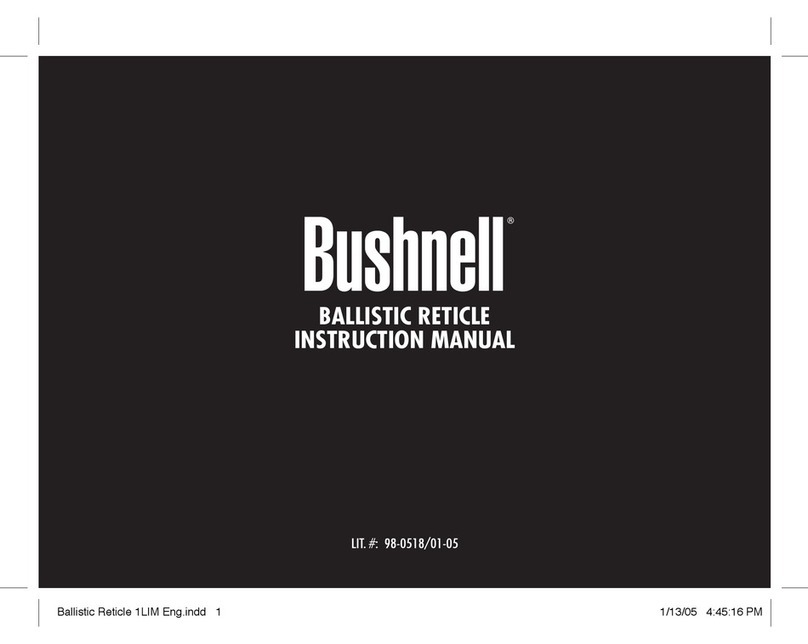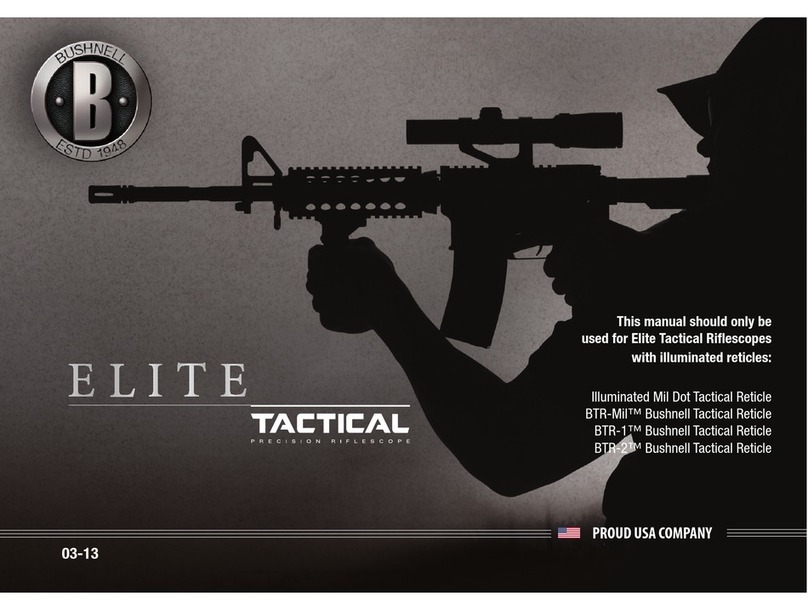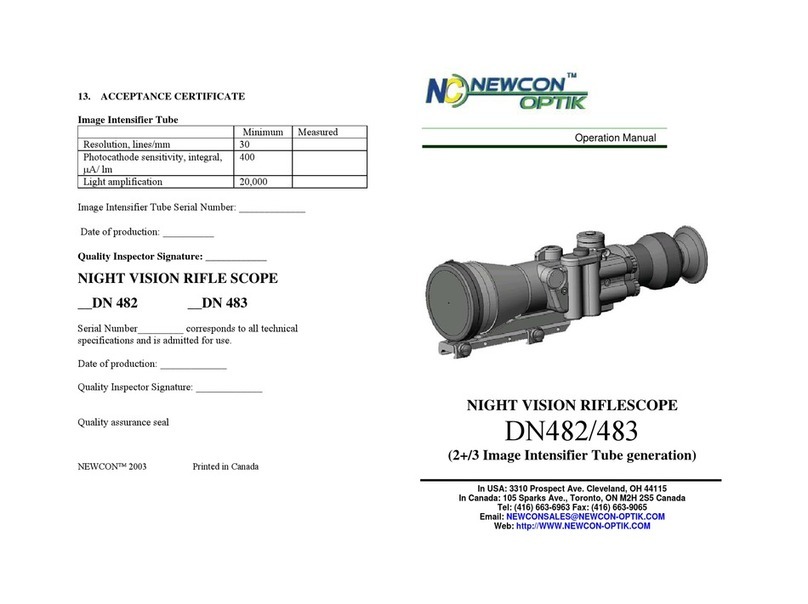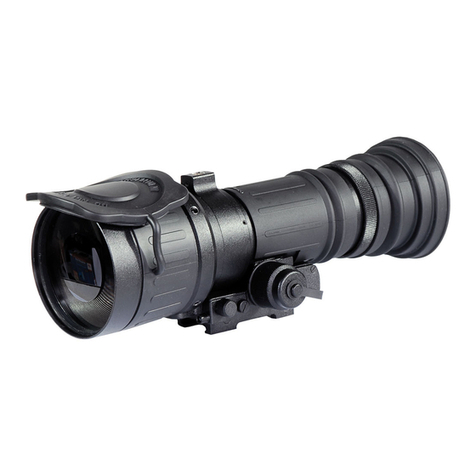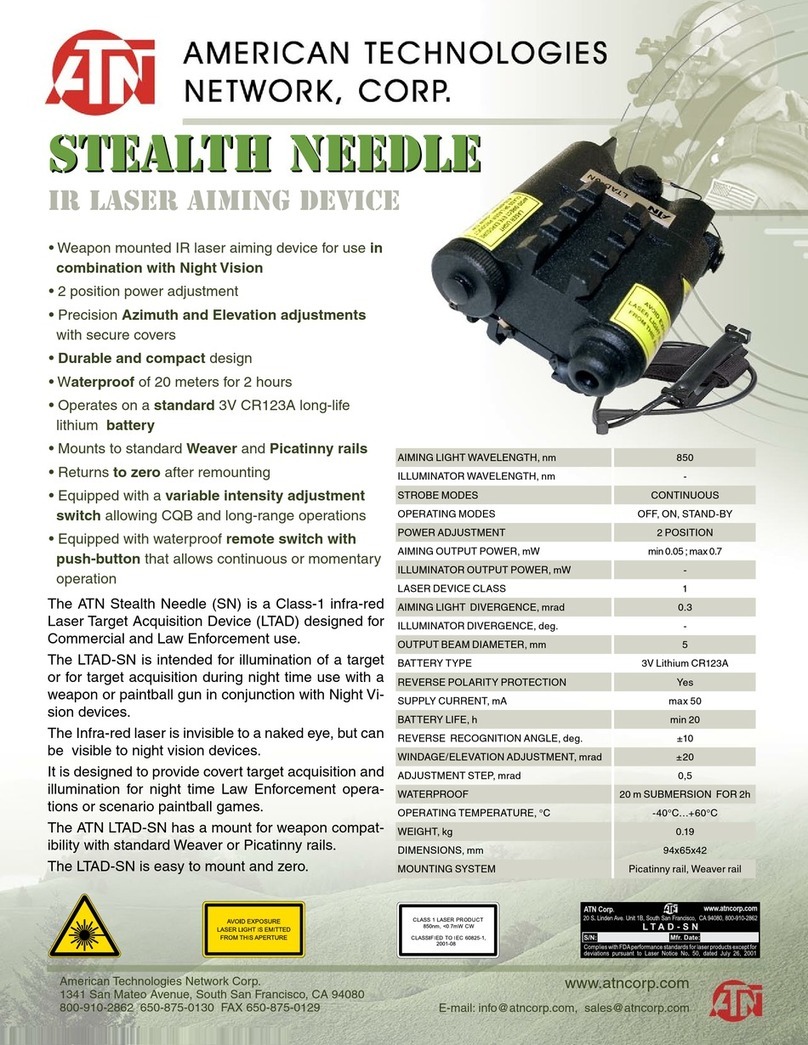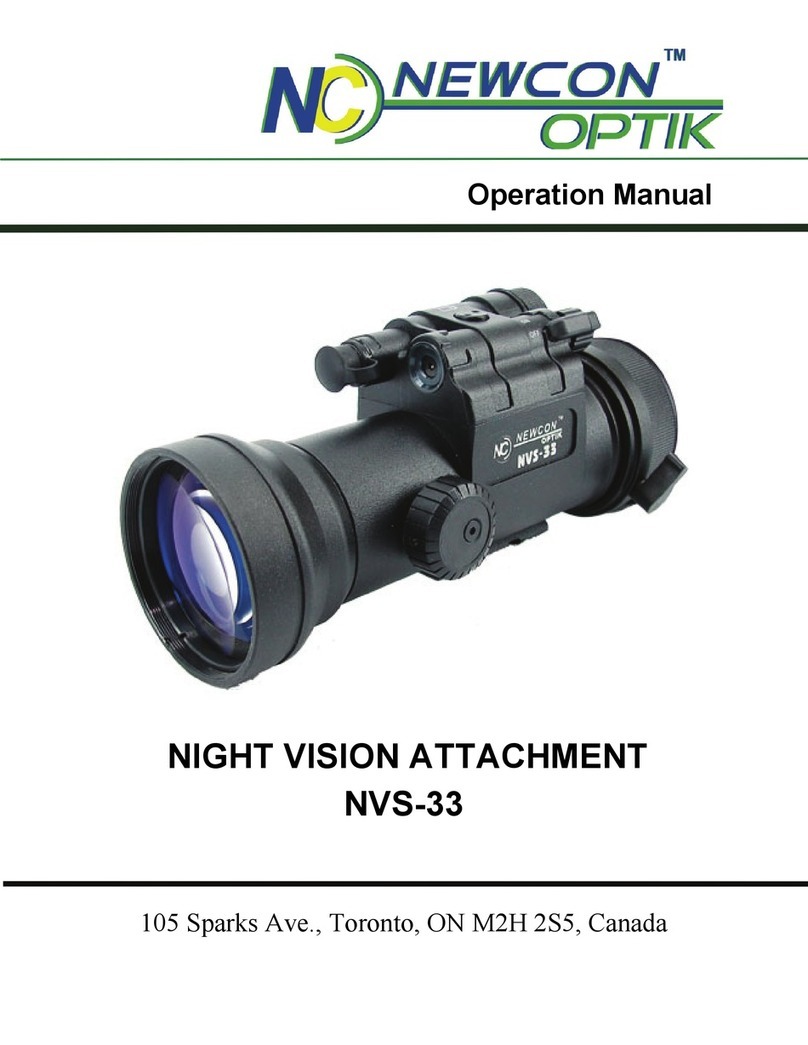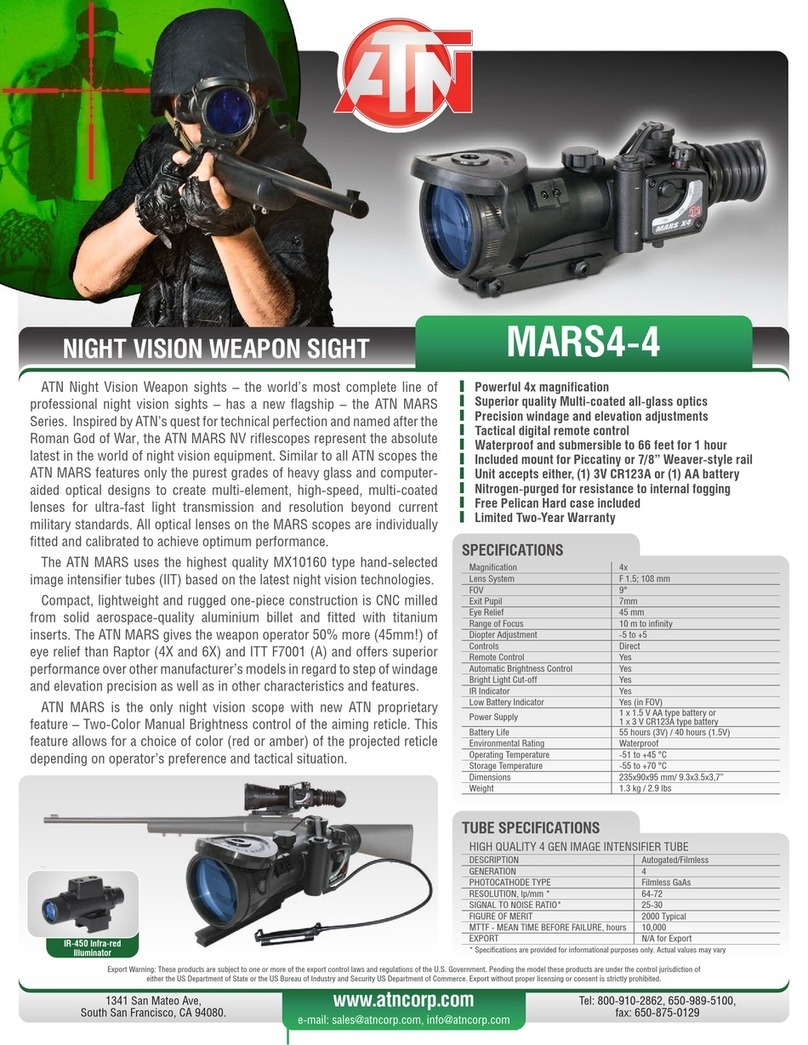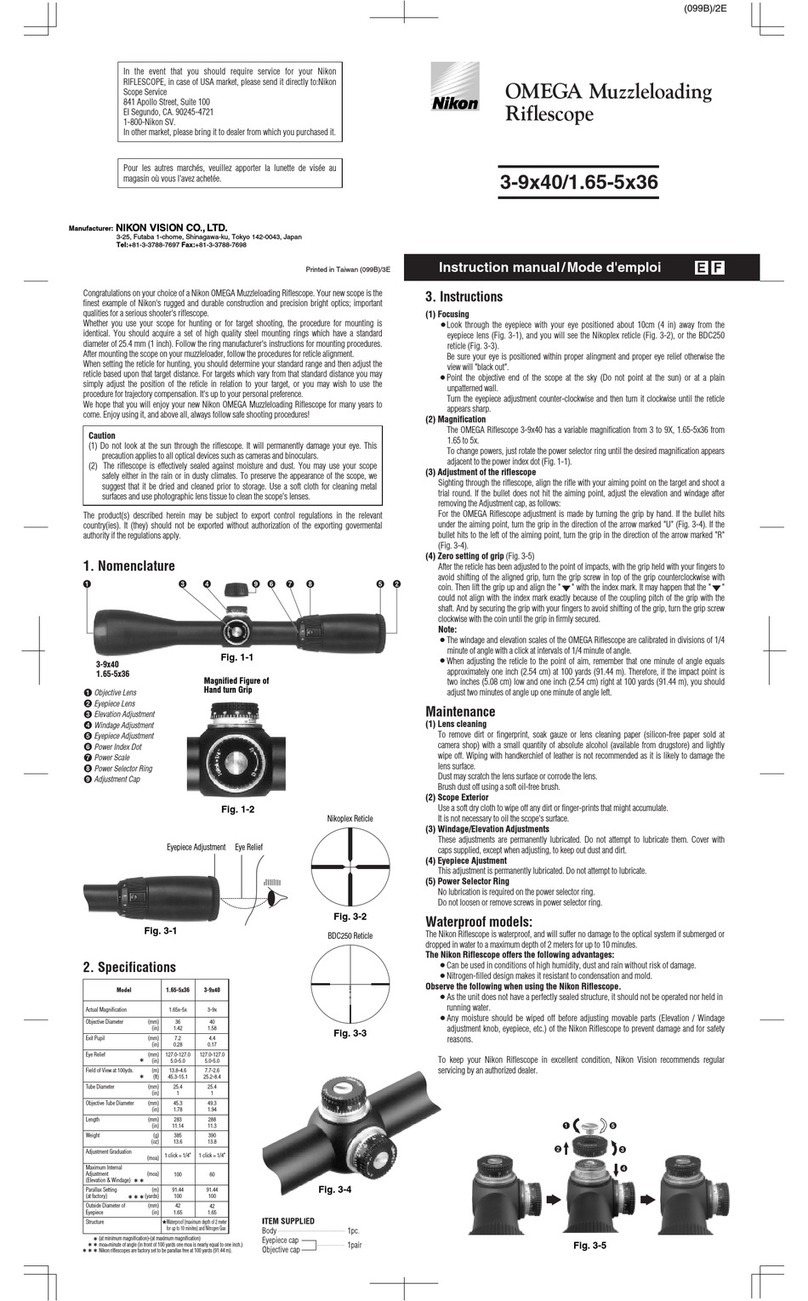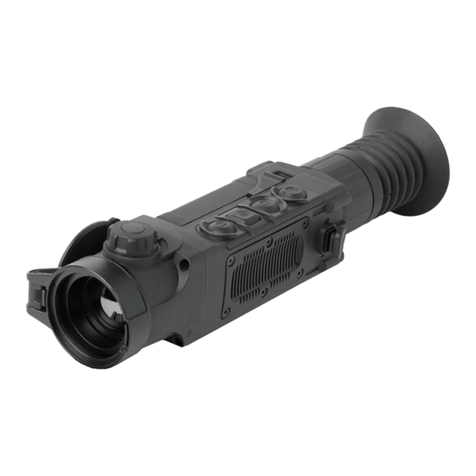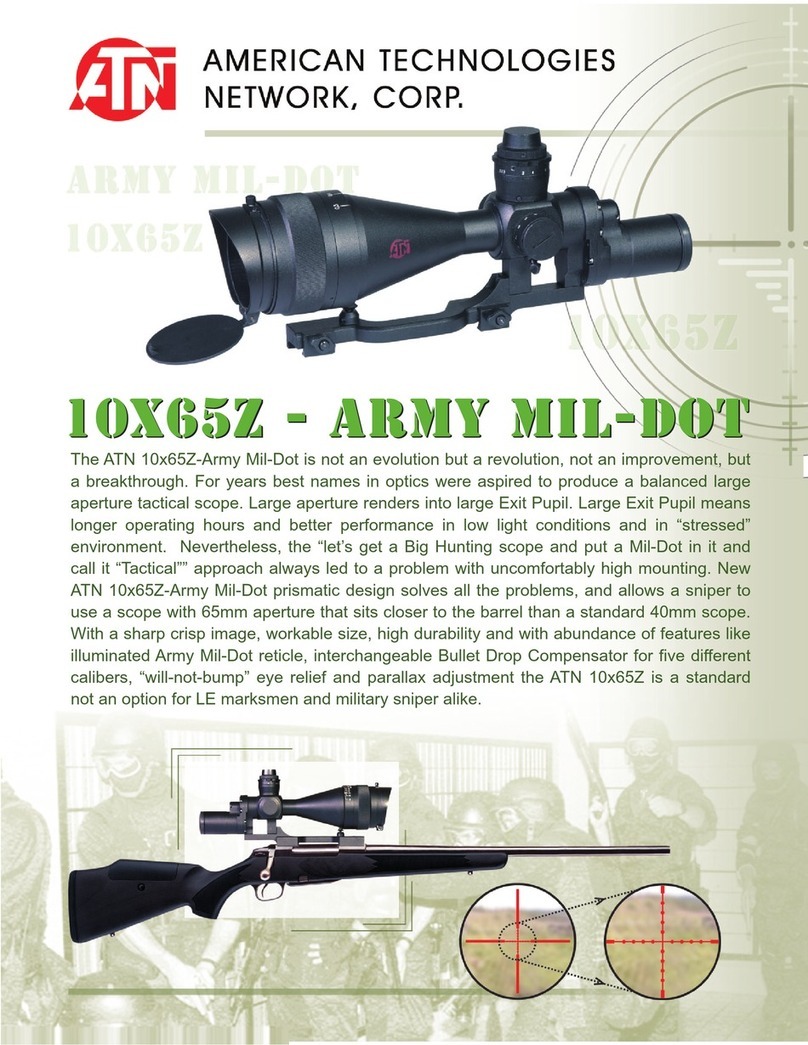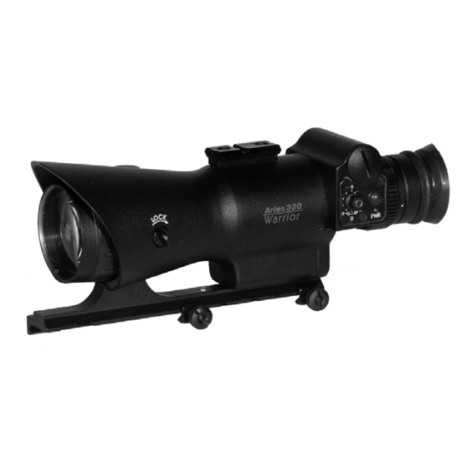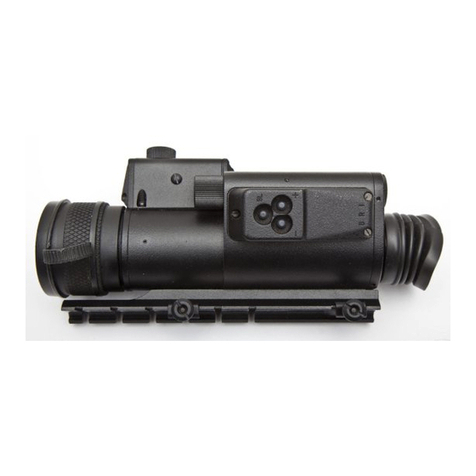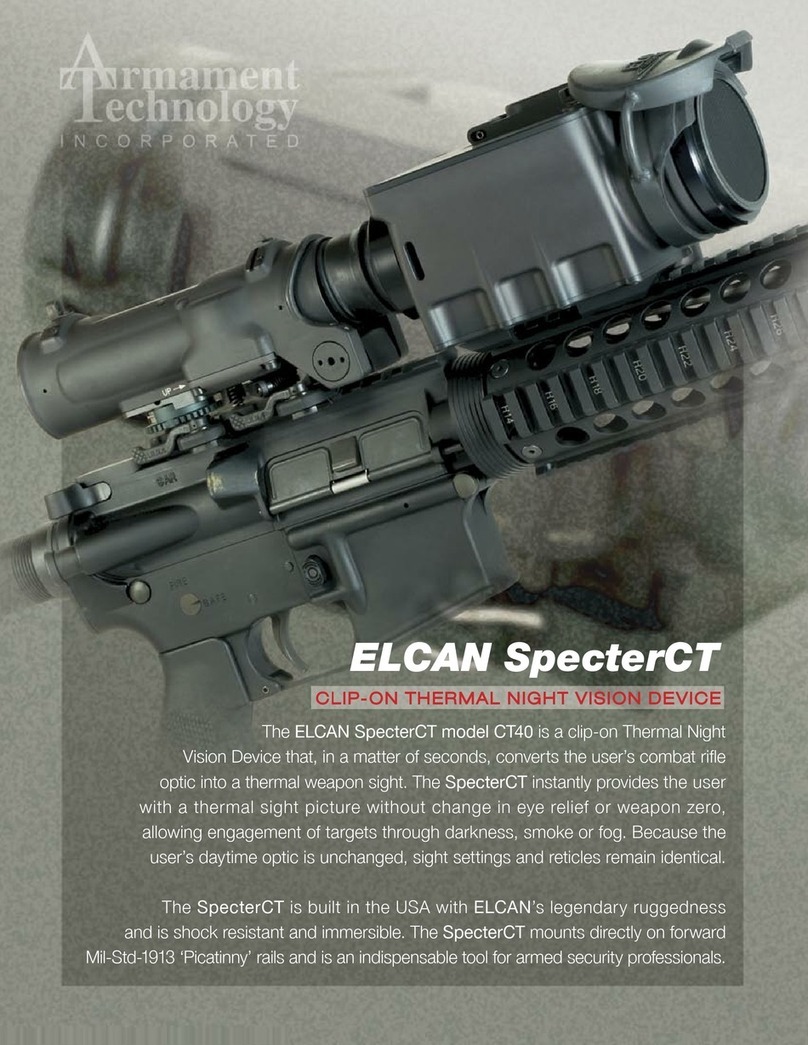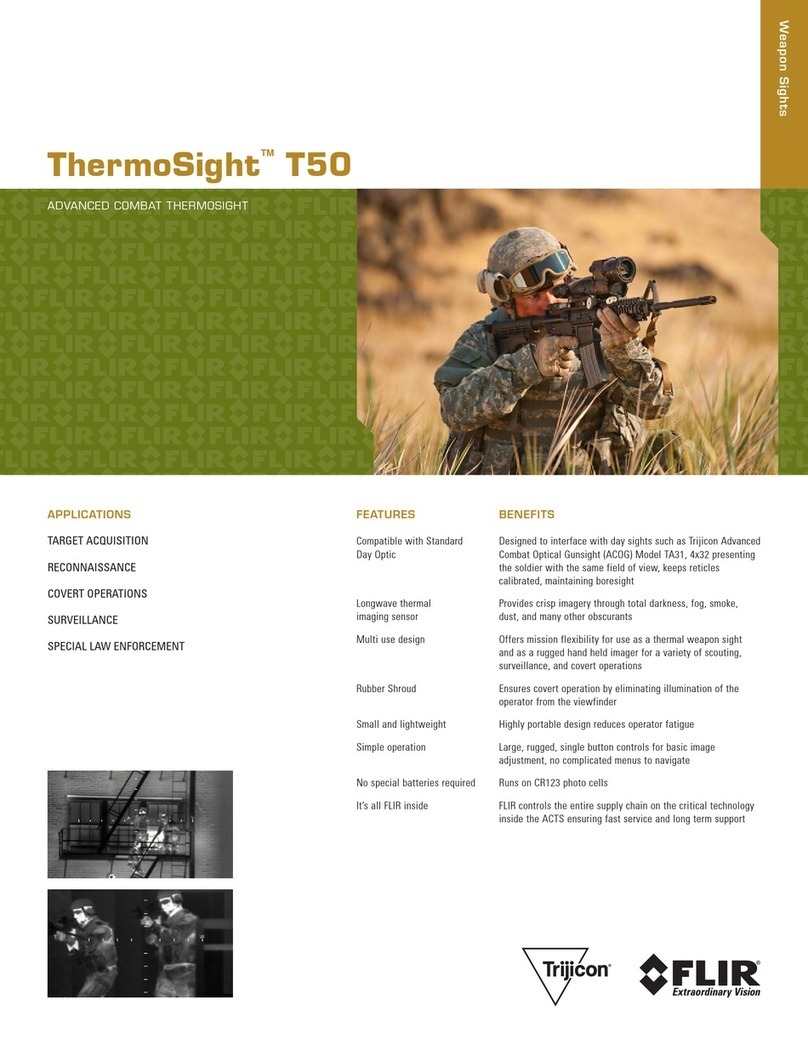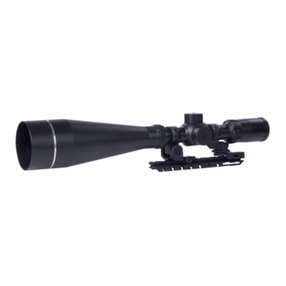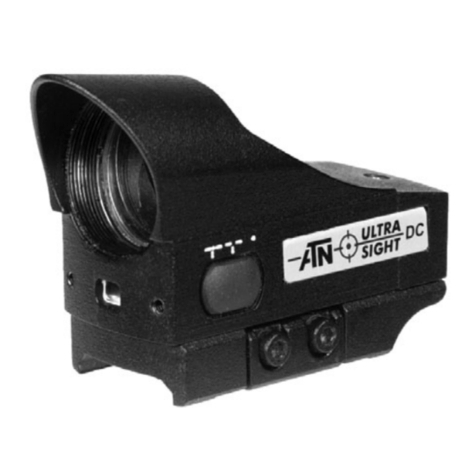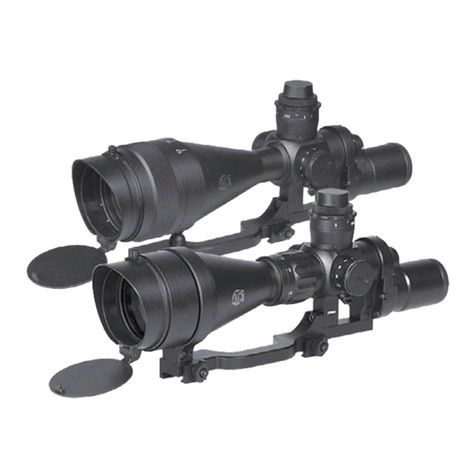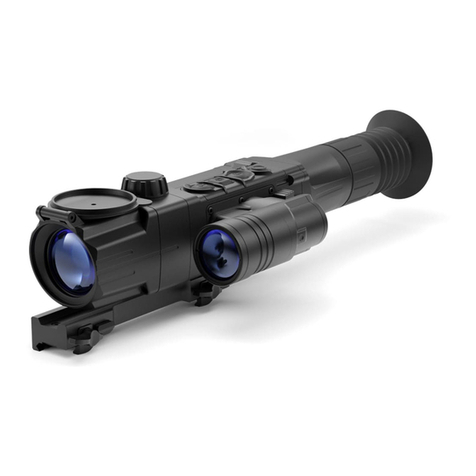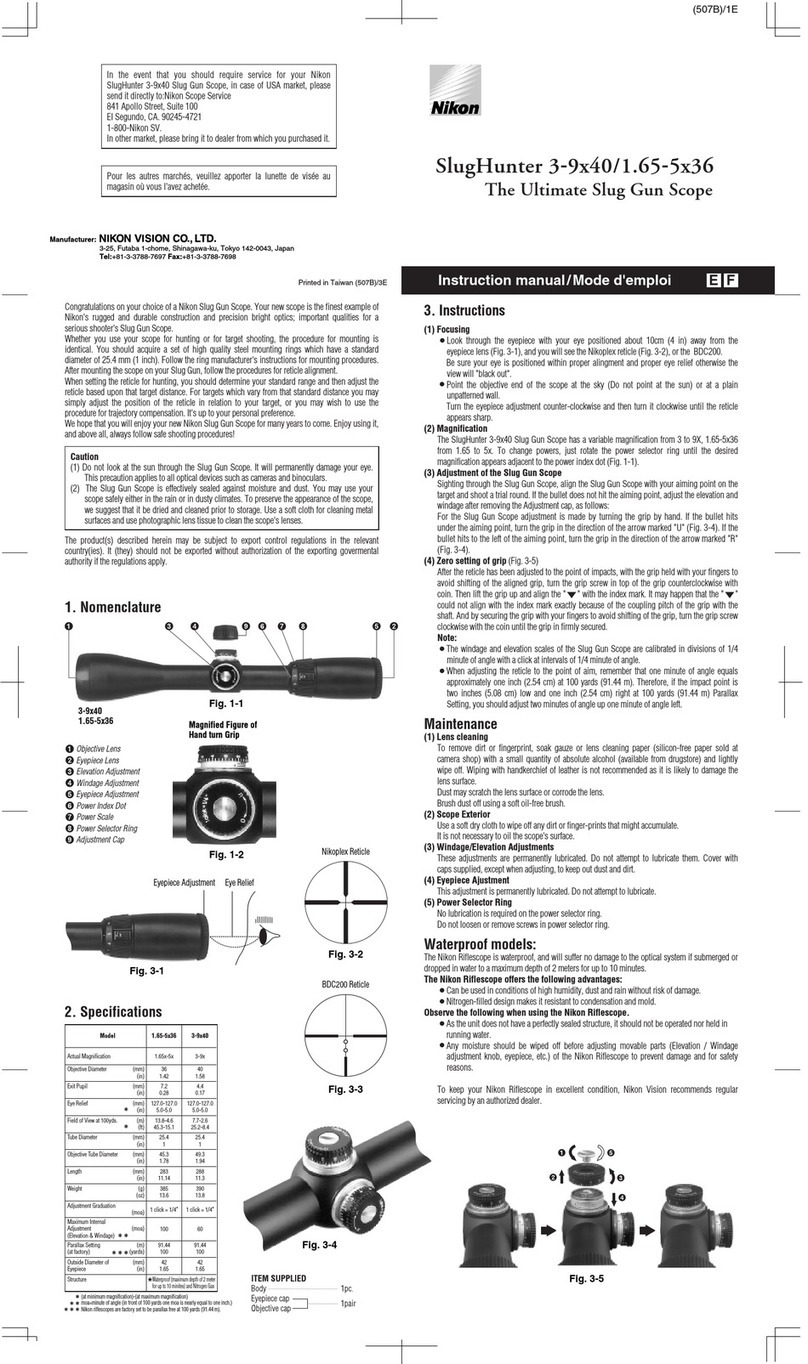4
FAST FOCUS EYEPIECE
The fast-focus eyepiece dial is found on the ocular end of the Bushnell Elite Tactical Riflescope. Use this adjustment to obtain a
reticle image that appears sharp to your eyes. If adjustment is needed, look at a distant object for several seconds without using your
scope. Then, shift your vision quickly, looking through the scope at a plain background. Turn the fast-focus eyepiece dial clockwise
or counterclockwise until the reticle pattern is sharp and clear. The eyepiece has a large adjustment range and should be used in
conjunction with the side focus (parallax) adjustment to obtain maximum resolution when viewing targets at long ranges.
POWER CHANGE RING
Changing the magnification of the Bushnell Elite Tactical Riflescope can be accomplished by grasping the
knurled knob marked with the scope’s magnification range (located on the far end of the ocular bell end).
Turn the power change ring clockwise for higher magnifications, counterclockwise for lower magnifications.
The magnification setting can be identified by noting the number that is in front of the stationary dot on the
scope tube.
SIDE FOCUS
The Side Focus adjustment corrects Parallax error. Parallax error is experienced when the intended target and the reticle are not on the
same focal plane. The side focus adjustment relocates an optical element within the scope, manipulating the incoming image to appear
on the same focal plane as the reticle within the riflescope, thus eliminating parallax error. Parallax error results in inconsistencies
regarding point of impact. This can be best experienced by looking at a 100 yard target with the side focus set to 500 yards. While
slightly moving your head left and right, or up and down, you will notice movement at the location where the crosshairs intersect.
However, if you change your side focus adjustment to 100 yards while looking at the 100 yard target, the intersection of the crosshairs
will not move. Please note the distance markings on the dial are intended as reference points only. Exact side focus adjustments may
needed after making adjustments to the eyepiece in order to achieve a high resolution, parallax free image.
